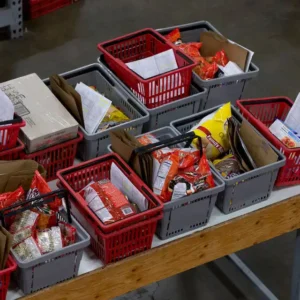How to Send a Letter to an Inmate: A Step-by-Step Guide
Communicating with a loved one or a friend who is incarcerated can be a vital lifeline, both for you and for them.
Sending letters is one of the most common and effective ways to stay in touch. This guide will walk you through the process of sending a letter to an inmate, ensuring that your correspondence reaches its destination without any hitches.
The Importance of Letters to Inmates
For inmates, receiving a letter can be a major event. It’s a connection to the outside world, a reminder that they are not forgotten, and a source of emotional support.
For the sender, it’s a way to maintain a relationship and offer encouragement. Whether it’s a family member, friend, or pen pal, your letter can mean the world to them.

Steps to Sending a Letter to an Inmate
Step 1: Gather Information About the Inmate
Before you can send a letter, you need some specific information about the inmate:
1. Full Name: The inmate’s full legal name.
2. Inmate ID Number: This is essential as it ensures your letter reaches the right person.
3. Facility Name and Address: You need the correct mailing address of the facility where the inmate is housed.
You can usually find this information on the facility’s official website or by contacting the facility directly.
Step 2: Write the Letter
When writing your letter, keep these tips in mind to ensure it’s both meaningful and appropriate:
1. Start with a Friendly Greeting: Use their name and a warm greeting. This sets a positive tone.
2. Keep it Positive: Inmates often experience a great deal of stress. Focus on uplifting and encouraging messages.
3. Be Honest and Supportive: Share updates about your life, offer support, and let them know they are in your thoughts.
4. Avoid Sensitive Topics: Steer clear of discussing their case, legal matters, or anything that could be deemed inappropriate.
5. Use Plain Language: Avoid slang or complicated language to ensure clarity.
Step 3: Format Your Letter Correctly
Prisons have strict rules about the format and content of letters. Here are some general guidelines:
1. Paper and Ink: Use plain white paper and black or blue ink. Some facilities might have restrictions on colored paper and ink.
2. No Staples or Paper Clips: These can be considered contraband.
3. One-sided Writing: Write on one side of the paper only to make it easier for prison staff to inspect.
Step 4: Address the Envelope Properly
Properly addressing the envelope is crucial. Here’s how:
1. Inmate’s Information: Include the inmate’s full name, ID number, and the facility’s address on the front center of the envelope.
2. Your Return Address: Include your full name and return address in the top left corner. This is important in case the letter needs to be returned.
Step 5: Be Aware of Facility Rules and Regulations
Each correctional facility has its own rules regarding mail. Here are some common regulations:
1. No Enclosures: Avoid sending money, stamps, or any items with the letter unless the facility allows it.
2. Content Restrictions: Refrain from including anything explicit, gang-related, or that could be deemed as a security risk.
3. Photos: If allowed, photos must be appropriate and comply with size restrictions.
Step 6: Sending the Letter
Once your letter is ready, take it to your local post office and send it via regular mail. Some facilities allow you to send letters through services like JPay, which can expedite the process.
Step 7: Be Patient
Mail to and from correctional facilities can take longer than regular mail due to the screening process. Be patient and understand that delays are normal.
Benefits of Writing Letters to Inmates
1. Your letter can provide much-needed emotional support.
2. Regular communication can improve the mental health of inmates.
3. Positive relationships help in rehabilitation and reintegration into society.
Common Questions About Sending Letters to Inmates
1. Can I send emails instead of letters?
Some facilities allow emails through services like JPay or CorrLinks. Check with the facility to see if this option is available.
2. What if I don’t have the inmate’s ID number?
The ID number is essential. Contact the facility or use an online inmate locator to find this information.
3. Can I send books or magazines?
Many facilities allow inmates to receive books and magazines, but these usually must be sent directly from the publisher or an approved vendor.
4. How often can I write to an inmate?
There is usually no limit to how often you can write. Regular communication is encouraged.
5. What happens if my letter is rejected?
If your letter does not comply with the facility’s regulations, it will be returned to you. Ensure you understand the rules to avoid this.
Conclusion
Sending a letter to an inmate is a straightforward process, but it requires attention to detail and adherence to specific guidelines.
Following the steps outlined in this guide, you can ensure your letter reaches your loved one or friend, providing them with much-needed support and connection.
Your effort to stay in touch can have a profound impact on their well-being and rehabilitation journey. So, take the time to write, and make a difference in their life today.





